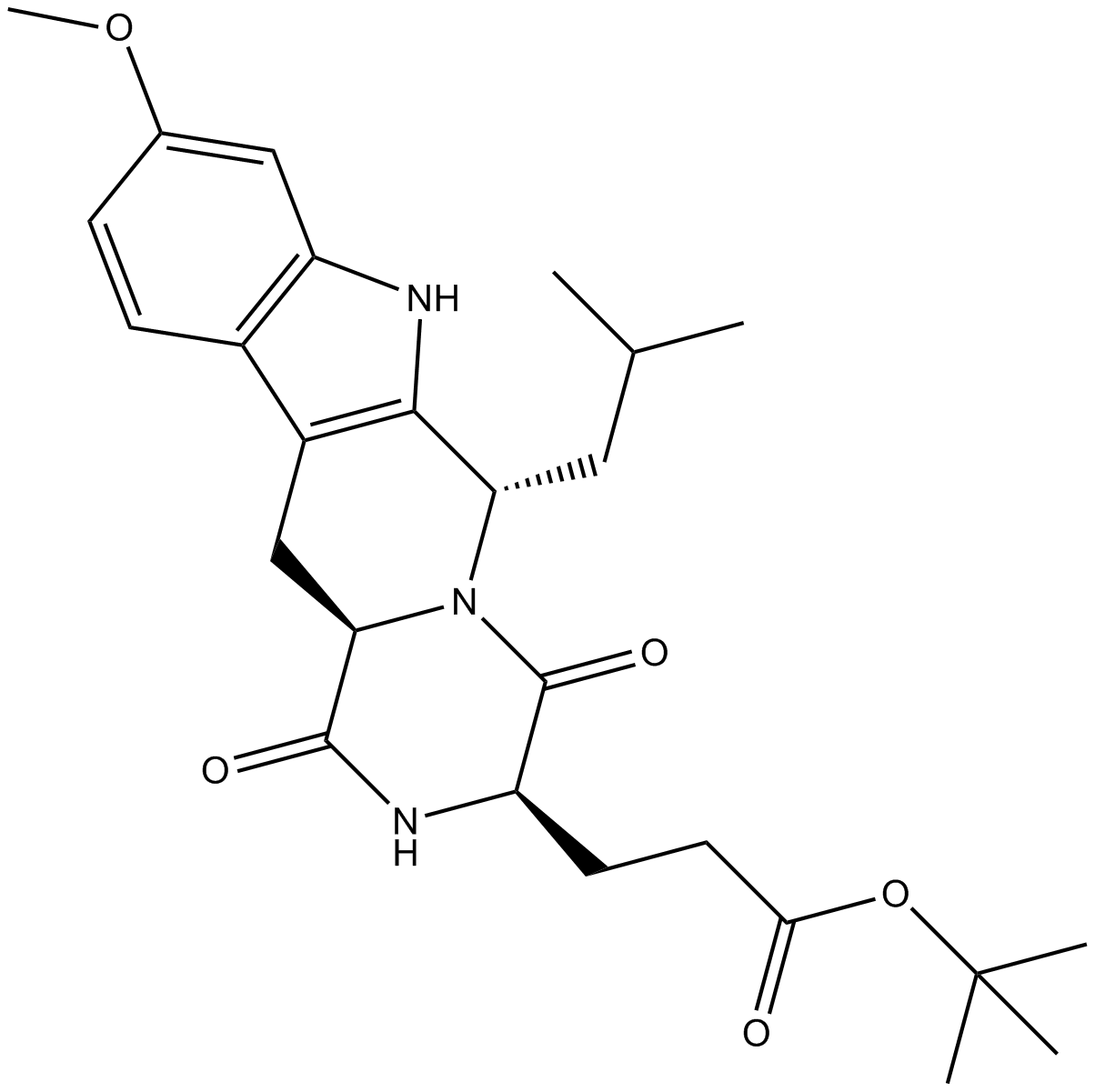Ko 143 |
| Catalog No.GC12711 |
Inhibitor of the multidrug transporter BCRP
Products are for research use only. Not for human use. We do not sell to patients.

Cas No.: 461054-93-3
Sample solution is provided at 25 µL, 10mM.
Ko 143 is a potent and selective breast cancer resistance protein multidrug transporter (BCRP) inhibitor with IC50 value of 26 nM [1].
BCRP is a member of ATP- binding cassette transport protein superfamily, which is a plasma membrane protein associated with multidrug resistance of cancer cells.It is found in the intestinal epithelium, liver canaliculi, the placental trophoblasts, mammary ducts and lobules, and endothelial cells of veins and capillaries. MDR is the principal reason for the failure of anticancer chemotherapy, where BCRP may act as a broad specificity drug efflux pump and confer multidrug resistance. When overexpressed, BCRP is able to confer the resistance of various cancer cell lines to drugs including topotecan, doxorubicin, daunorubicin and mitoxantrone.
BCRP is the first potent and specific BCRP inhibitor applicable in vivo. When a library of potent compounds was screened in mouse T6400 and human T8 cancer cell line, Ko 143 was identified as the inhibitor with the high inhibitory activity and low cytotoxicity. Additionally, Ko 143 was observed to have 200-fold selectivity over P-glycoprotein and multidrug resistance protein-1 [2]. The effect of Ko 143 in reversing Bcrp-1/BCRP-mediated drug resistance was also observed in mouse T6400 and human T8 cell line respectively. At EC90 concentration of Ko 143, it reversed the Bcrp-1/BCRP-mediated drug resistance in the drug selected T6400 and T8 cell line, resulting in 10-fold sensitization to topotecan and mitoxantrone [2].
In mouse model, oral administration of Ko 143 50 mg/day or higher showed no evidence of acute of delayed cellular toxicity [2]. In Mdr1a/1b-/- mice, oral administration of Ko 143 of 10 mg/kg resulted in increasing plasma topotecan level by 4-6 folds at 30 min and 60 min after oral administration of the drug. It suggested Ko 143 suppressed the multidrug resistance conferred by BCRP [2].
References:
[1] Loevezijn AV et al. , Inhibition of BCRP-mediated drug efflux by fumitremorgin-type indolyl diketopiperazines. Bioorg. Med. Chem. Lett. 2001, 11(1), 29-32.
[2] Allen J D et al. , Potent and Specific Inhibition of the Breast Cancer Resistance Protein Multidrug Transporter in Vitro and in Mouse Intestine by a Novel Analogue of Fumitremorgin C. Mol. Cancer Ther. 2002, 1, 417-425.
Average Rating: 5 (Based on Reviews and 30 reference(s) in Google Scholar.)
GLPBIO products are for RESEARCH USE ONLY. Please make sure your review or question is research based.
Required fields are marked with *




